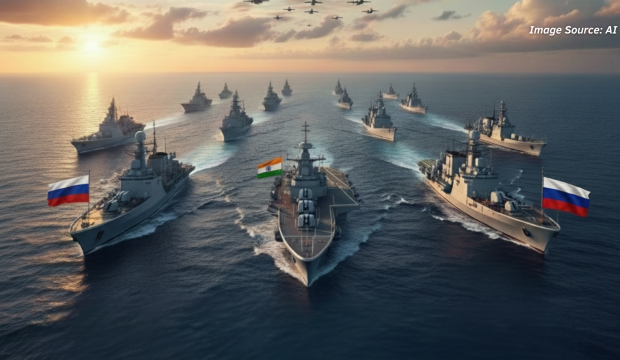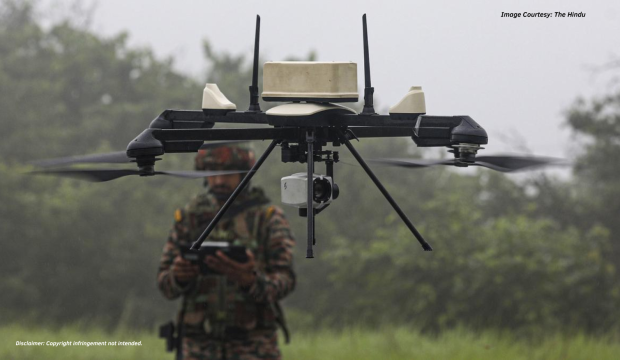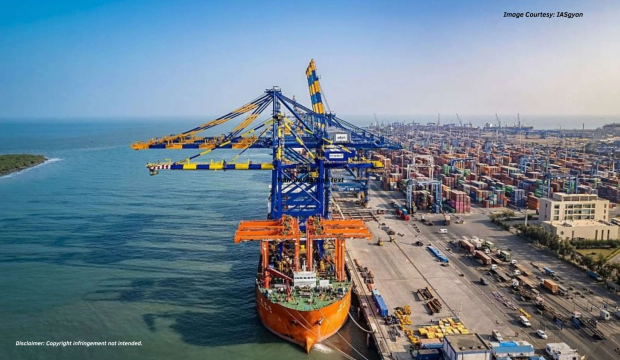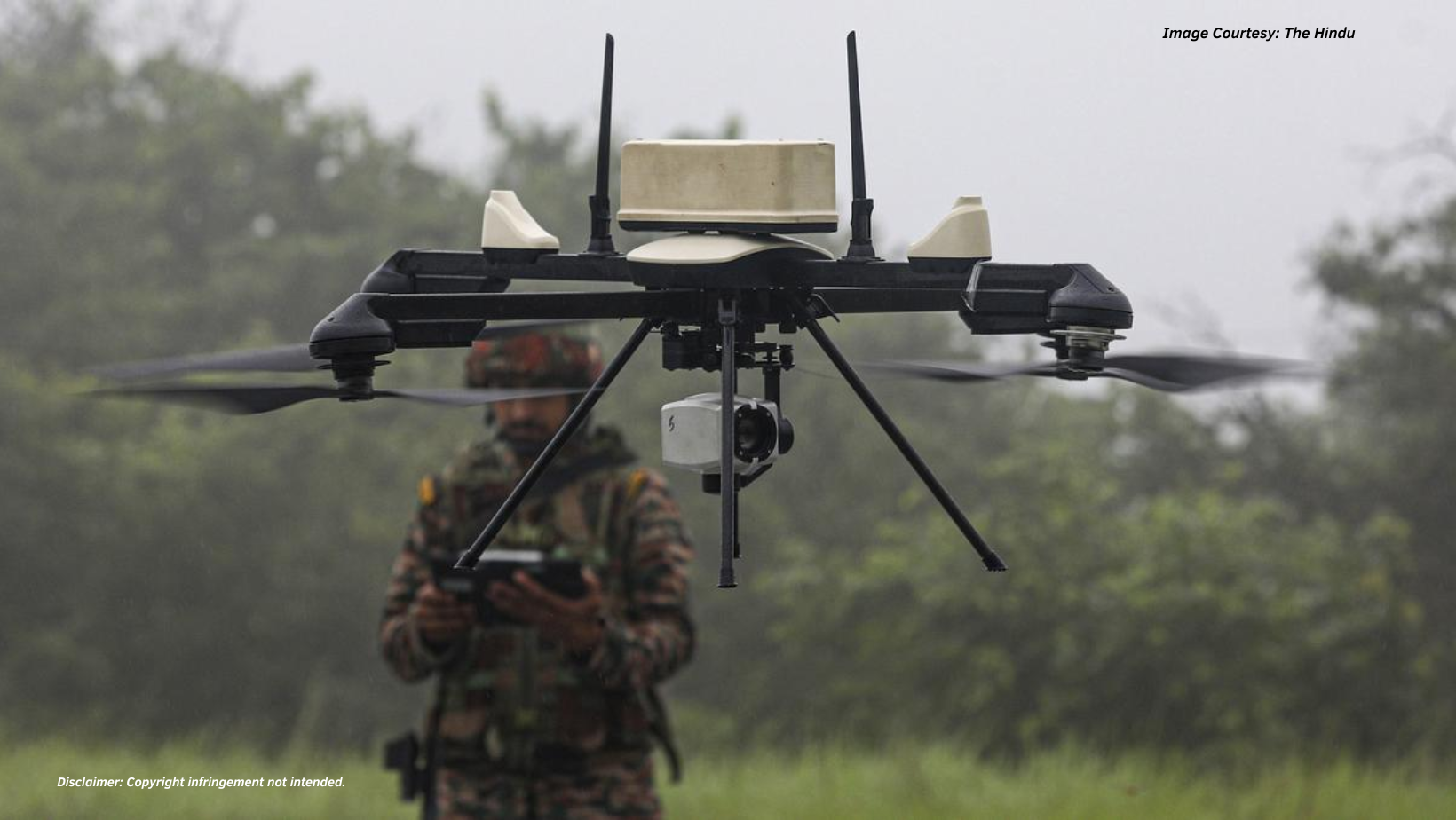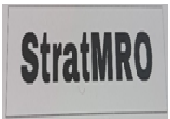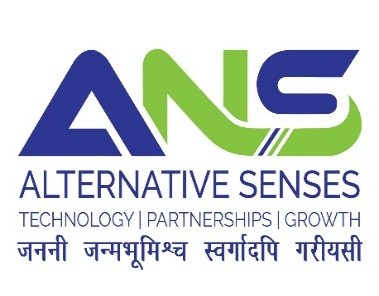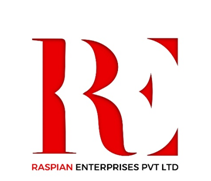Introduction
The industrial corridors and defence industrial complex have ushered astronomical growth of the manufacturing sector in India. These give visible footprint to the Aatmanirbhar Bharat & Make in India visionary clarion calls. Complemented with the MoD initiatives of issuing a positive indigenisation and import ban list of 310 major equipment and 780 major sub systems for defence procurements, a massive opportunity beckons the Indian defence Industry. India is the second largest importer of Defence equipment and given the thrust in defence manufacturing and the proactive response of the private sector, the prospects look positive. The resurgence in ten fold increase of exports in six years to Rs 15920 Crores in Defence Weapon Systems builds immense optimism in the shape of things to come. India is currently exporting military hardware to include surveillance systems and a variety of radars, guided missiles, advanced towed artillery gun systems, advanced light helicopter (ALH), offshore patrol vessels, personal protective gear, to over 80 countries. In addition, state of the art indigenous weapons systems that hold major export potential include the LCA Tejas, different types of helicopters, UAVs, artillery guns, Astra beyond-visual-range air-to-air missiles, Akash surface-to-air missile systems, tanks, sonars, radars, host of electronics equipment and info decision support software systems.
The export of products, in general and, defence equipment heralds a new landscape in the cradle to grave journey of an equipment. Unlike a normal equipment, defence equipment ais characterised by a long useful life of over 40 years with varying exploitation patterns in diverse terrains under different climatic conditions. This calls for a well-defined versatile MRO based life cycle sustenance support or long term MRO contracts which must be planned and institutionalised as a major export add on. The MRO package would comprise major repair interventions by skilled manpower for both remote and institutional deployments, specialised tools and test equipment, creation of infrastructure for major repairs / overhaul, provisioning of spares and technology upgrades, technical documentation, drawings for 3D printing, as big ticket pillars of sustenance support thereby augmenting ROIs of OEMs. A case in point is the MRO set up for UAVs created by IAI Malat after 15 years of protracted AMC. It is now a captive facility for all MRO and all forms of technology upgrades of UAVs.
The geopolitical and geostrategic considerations, specially, in defence equipment of Russian Origin auger well for Indian defence industry. Russian and Ukraine capabilities and capacities to provide any MRO support to the Russian origin equipment has collapsed. The Russo-Ukraine War has virtually exhausted the MRO hub which emanated from these countries. Many Nations to include African countries (Angola, Congo, Algeria), Egypt, Middle East, Europe, Iraq, Iran, Syria, Yemen, North Korea to name a few have procured weapon systems from erstwhile USSR and from Russia thereafter. The ongoing war has opened new vistas of MRO support and India must seize of this opportunity. The global MRO market in 2021 was 701.5 Bn USD and given the trends, it is likely to be the fastest growing market trends with Industry 4.0, it is expected to touch 897.9 Bn USD by 2028. The Indian MRO share in 2021 was 1.5 Bn USD. Given the momentum of defence exports there is a potential of Indian MRO industry touching at least 10 Bn USD by 2030 and maintain the escalatory growth trajectory with the life cycle sustenance support to Defence Weapon Systems.
MRO opportunities exist in defence weapon systems in land based, aviation, naval / marine, ICT, space, and their commercial products including, marine, commercial aviation and renewable energies etc. The Government of India is upbeat having come up with a Electronics Repair Policy to arrest global repairable in India. There is a strong case to have a Ministry of Corporate Affairs driven MRO Division to augment and harness the power of Indian Aatmanirbharta to include reverse engineering and reclamation among the myriad of MRO initiatives.
The Ten Pillars of MRO
The Project Management Cycle of MRO is characterised by an Ideation phase (Why & What), Planning Phase (What, When, Where), Design Phase (Who, How) and Implementation (5Ws & H). Aatmanirbhar Bharat, Make in India, Digital India, Skill India and Start Up India have set the foundation for India to create a global impact in manufacturing and services sector both of which are the principal enablers for MRO industry. India has the potential to handle legacy and state of the art equipment, given the technological bandwidth. Having looked at the growth of defence industry and dual use civilian use, time is ripe for India to take a leap and lead into MRO globally. The ten key pillars which need to be planned are explained below.
Skilled Manpower is the first pillar. Given the youth bulge which is a mega demographic dividend, there is a need to focus skill development in MRO oriented trades. High certified skill levels in 3D printing, smart additive manufacturing, robot and other forms of welding, soldering and electronics repairs, auto repairs, air conditioners and FMCG products, infrastructure maintenance trades etc are areas of potential MRO. Indian youth has the advantage of being compliant with the English language and this could add a foreign language to meet global aspirations. This would result in enhancing employment opportunities at a time when layoffs are becoming a norm and foster brain circulation (and not drain) in and out of India. Tradesmen are best bet and may be classified into three categories – the greenhorns, the semi-skilled and the skilled. On the job training by creating buddy pairs of skilled with less proficient tradesmen, quality of supervision and technical leadership, keenness to learn, interest taken by the subject tradesman and uptake to enhance technical thresholds and work experience often decides the quality of skilled tradesman. There is a need to institutionalise stringent quality norms for certifying quality tradesmen.
Tools and specialised tools is the second pillar. Robot based automated and autonomous systems aided with sensors and IoT is the next gen opportunity. Repairs can also be enabled by humanoid based robot arms which are programmed and customised for a variety of skills including welding and precision MRO tasks. Technology interfaces to include wearable AR/VR wireless devices, online learning management systems for upgrading knowledge and skills and ergonomically designed tools can enhance skills. Skill development can also be enhanced by bringing in precision handsfree look up display for fault diagnostics and repair and precision tools including master slave or precision based numerically controlled robotic systems.
Test equipment and specialised test equipment is the third pillar. Identifying maintenance triggers and KPIs, embedded and built in test equipment, display dashboards for MRO decision making info systems is yet another opportunity. Driven by sensors, IoT, big data analytics and AI, an autonomous condition based monitoring system can be designed and developed for trouble shooting and just in time repairs. These enable reliability centric predictive prescriptive maintenance which can generate optimum maintenance practices against the contemporary predictive periodic maintenance which is just in case and cost prohibitive. While the Gen Z and Alpha equipment are condition based monitoring complaint, opportunity lies in future management of legacy (Gen X &Y) equipment.
Technical Literature is the fourth pillar which caters for processes, procedures, inspections and quality control /assurance standards. The paper based volumes of user and technical manuals need to be replaced by Interactive Electronics Technical Manuals (IETMs). With hierarchical five levels, these e-publications area huge value add and create an inclusive immersive experience in self learning, enhancing depth of understanding and knowledge. Illustrative in nature, these image based AR – VR enabled documents provide a user friendly learning experience. An ideal IETM is an expert system which comprises learning and knowledge management system, troubleshooting-diagnostics-fault identification-repair methodology, systems approach to in, floor and out inspection, quantitative parameters for high quality repair, quality control and assurance and FAQs. This is a great opportunity given the software development and elearning management systems which is the USP of Indian education eco system. Inherent to technical literature is transfer of technology and design documents which are important when planning product improvement, reliability systems studies and 3 D printing.
Spares is the fifth pillar of life cycle sustenance. This is one of the key pillars since the technological obsolescence cycles are becoming faster and inventory management is a perennial challenge. Manufacturers recommended list of spares is a major cost centre for inventory holding, maintenance and storage costs by the user which results in a large slow moving / dead inventory. Indian OEMs would do well in defining service level agreements for spares and inventory spares. Indigenisation of spares, product improvement and 3D printing are great opportunities in smart next gen asset management as a part of MRO.
Infrastructure is the sixth pillar. India needs to invest in mobile shelters, containerised, prefab and customised technical infrastructure in India and abroad. Given the Defence exports and other opportunities, industry needs to invest in MRO infrastructure with a strategic intent. As an example, the UAV IAI Malat MRO hub could cater for pan India needs up to the tactical battle area, the edge, and Asian needs in the long run. We need to plan, design and adopt global MRO model as a continent based footprint, with focus on MRO on the edge, and unleash Aatmanirbharta outreach. In the same vein, there is a need to formulate MRO Training Academies in Technical institutions (it is & Engg Colleges) for certified training, research and education courses to gain MRO supremacy through Academia industry partnerships.
Infrastructure is the sixth pillar. India needs to invest in mobile shelters, containerised, prefab and customised technical infrastructure in India and abroad. Given the Defence exports and other opportunities, industry needs to invest in MRO infrastructure with a strategic intent. As an example, the UAV IAI Malat MRO hub could cater for pan India needs up to the tactical battle area, the edge, and Asian needs in the long run. We need to plan, design and adopt global MRO model as a continent based footprint, with focus on MRO on the edge, and unleash Aatmanirbharta outreach. In the same vein, there is a need to formulate MRO Training Academies in Technical institutions (it is & Engg Colleges) for certified training, research and education courses to gain MRO supremacy through Academia industry partnerships.
Infrastructure is the sixth pillar. India needs to invest in mobile shelters, containerised, prefab and customised technical infrastructure in India and abroad. Given the Defence exports and other opportunities, industry needs to invest in MRO infrastructure with a strategic intent. As an example, the UAV IAI Malat MRO hub could cater for pan India needs up to the tactical battle area, the edge, and Asian needs in the long run. We need to plan, design and adopt global MRO model as a continent based footprint, with focus on MRO on the edge, and unleash Aatmanirbharta outreach. In the same vein, there is a need to formulate MRO Training Academies in Technical institutions (it is & Engg Colleges) for certified training, research and education courses to gain MRO supremacy through Academia industry partnerships.
Infrastructure is the sixth pillar. India needs to invest in mobile shelters, containerised, prefab and customised technical infrastructure in India and abroad. Given the Defence exports and other opportunities, industry needs to invest in MRO infrastructure with a strategic intent. As an example, the UAV IAI Malat MRO hub could cater for pan India needs up to the tactical battle area, the edge, and Asian needs in the long run. We need to plan, design and adopt global MRO model as a continent based footprint, with focus on MRO on the edge, and unleash Aatmanirbharta outreach. In the same vein, there is a need to formulate MRO Training Academies in Technical institutions (it is & Engg Colleges) for certified training, research and education courses to gain MRO supremacy through Academia industry partnerships.
Infrastructure is the sixth pillar. India needs to invest in mobile shelters, containerised, prefab and customised technical infrastructure in India and abroad. Given the Defence exports and other opportunities, industry needs to invest in MRO infrastructure with a strategic intent. As an example, the UAV IAI Malat MRO hub could cater for pan India needs up to the tactical battle area, the edge, and Asian needs in the long run. We need to plan, design and adopt global MRO model as a continent based footprint, with focus on MRO on the edge, and unleash Aatmanirbharta outreach. In the same vein, there is a need to formulate MRO Training Academies in Technical institutions (it is & Engg Colleges) for certified training, research and education courses to gain MRO supremacy through Academia industry partnerships.
Infrastructure is the sixth pillar. India needs to invest in mobile shelters, containerised, prefab and customised technical infrastructure in India and abroad. Given the Defence exports and other opportunities, industry needs to invest in MRO infrastructure with a strategic intent. As an example, the UAV IAI Malat MRO hub could cater for pan India needs up to the tactical battle area, the edge, and Asian needs in the long run. We need to plan, design and adopt global MRO model as a continent based footprint, with focus on MRO on the edge, and unleash Aatmanirbharta outreach. In the same vein, there is a need to formulate MRO Training Academies in Technical institutions (it is & Engg Colleges) for certified training, research and education courses to gain MRO supremacy through Academia industry partnerships.
Technology & data management are reshaping the future of equipment and hence MRO and comprise the seventh & eighth pillar. The future MRO best practice is defined by 4Ds – data, digitization, digitalization and disruption. Semiconductors, Big Data Analytics and AIML is the MRO nucleus with cloud, blockchain, AR, VR, Meta, 3D printing, SMART additive manufacturing, quantum computing, 5G, 6G to name a few big tickets, as the orbits. Semiconductors define hardware and software on chip / platform which have the potential to exploit the power of technology and innovation to create digital twins. These digital twins assist in designing a reliability enabled sensor and IOT based big data management platform for system health monitoring. This huge volumes of analysed data for diagnostics analysed through AIML configures info based MRO decision support system for predictive and prescriptive repair intervention based on a user friendly look up display panel (Figure 1 Refers). This pillar has the potential to act as a catalyst of institutionalising disruptive practices through kaizen /ideation in all pillars of life cycle sustenance support. MRO info decision support is a niche area with huge potential of innovation in defence weapon platforms and is a mission readiness enabler & game changer.
The above needs to be given a form and shape through structure and policies which are the ninth and tenth pillars. OEMs would do well in creating a specific MRO vertical to manage life cycle sustenance support and interface with designers, developers, production entities to provide effective MRO guidance & support. Related to the structures and infrastructural layout, the MRO policies play a very significant role. There have been policies on major intervention based on exploitation / vintage whichever is earlier as a just in case MRO periodicity preventive practice. This has basic flaws. For example, a tank engine would be due for overhaul in case the tank is of 1975 vintage / done 1000 hours of operation (exploitation), whichever is earlier. The mute equipment goes through the policy driven major intervention. It is like saying all those individuals who married for 20 years (exploitation) / are 1975 born (vintage) should undergo open heart surgery. This does not happen because humans undergo major medical interventions by condition monitoring. This calls for humanising assets which shall be discussed ahead. These assets are driven by technology and information system and can help evolve a realistic & progressive FORWARD (Feedback On Repair, Workshop Activity And Reliability Data) policy. Repair and maintain if you must and when you must.
Figure 1 LOOK UP DISPLAY PANEL FOR MRO INTERVENTION DECISION SUPPORT (Pillar Technology & Data Management Refers)

Humanising Assets
Humanising Asset is a simple concept. The human body is a complex system with five basic sensory organs but a sensor-based anatomy of systems (respiratory, circulatory, endocrinology, etc) duly networked by the nervous systems all commanded and controlled by the cerebral system. The system is well monitored and the why, when, which, what, where for maintenance and any intervention is indicated by a well-defined symptom based diagnostics. All humans go in for an informed medical intervention based on health parameter KPIs. That said, the key watchwords in asset life cycle sustenance support are reliability, dependability, health diagnostics & predictive maintenance. This calls for humanising assets.
The emerging technologies have disrupted business models, globally. Industrial Automation to Industrial Autonomy is the disruption beyond Industry 4.0 resulting in a technology driven human machine interface, where decision making is partially or in some cases completely machine enabled. There is a need to Humanise Assets by building an information system of sensors and IoT devices for effective condition based monitoring and maintenance. Technology, innovation, big data analytics, augmented HMI and AIML have the potential of creating software defined systems and products – software defined radios, software defined vehicles (SDV) leading to autonomous systems with inherent MRO status enablement. As an example, SDV, is an electronic vehicle Figure 2 below refers.
Figure 2 - Sensors & ECUs In Vehicles – Humanising Assets
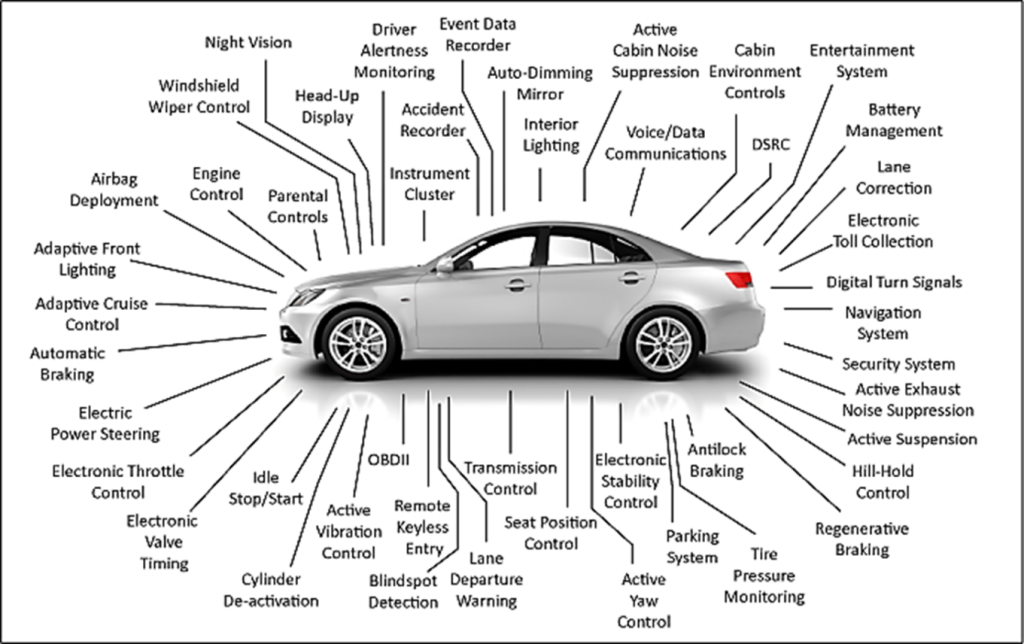
The SDV comprises up to 150 sensors and electronics control units ECUs, networked through a local interconnected network (LIN /CAM/MOST) configured by a wiring harness bus or wireless cyber secure systems defined in zones (power train, suspension system are two zones) and controlled through an onboard computer and a software of 200 Million Lines of Code (Boeing 777 has approximately 4 Million Lines of C ode). The dash board display system can be MRO enabled to give a picture of green, amber and red zones to define mission reliability status and level of intervention (Figure 1 above refers). This technology has the potential of designing and developing unmanned autonomous systems, technologically upgrading legacy defence weapon systems with a clear visibility on mission readiness. This today is a mission commanders challenge and hence an OEM opportunity.
Humanising assets is the first Tri Service opportunity for legacy equipment with immense value add in gauging mission reliability based readiness. This will facilitate condition based monitoring and a major MRO enabler with global footprint opportunity.
Tri Service MRO Opportunities & Curating Global MRO Footprint – A Prognosis
Defence weapon systems are huge revenue earners and with embedded MRO as a life cycle sustenance support have the potential of enhancing Comprehensive National Power. There is a huge convergence in land, sea, air, space, cyber systems driven by common technology stacks of ICT, quantum, software defined systems, info decision support systems and the commonality of major aviation manned and unmanned assets, missile systems, power trains and emerging EV scenarios. The common chord of most of the weapon systems is life cycle sustenance support through MRO interventions. Tri Service Defence MRO enablers is a great opportunity that can be curated with global imprints which may be ‘Driven By Industry’ are given in the paragraphs below.
Theatrization of the Armed Forces has been on the anvil for configuring joint & integrated operations. Industry OEMs, both public and private sectors, must profess unity of approach with MoD, MHA, HQ IDS, Tri Services, CAPF and DRDO, to drive future capability technology road maps for common technologies and service specific on a case by case basis. This synergy could also help create a single Integrated Capability Development System and a roll on priority plan. This will give an enormous momentum to technological modernisation of the Armed Forces and develop Indian Defence Industry comprising technology upgrades, state of the art equipment and a womb to tomb life cycle MRO / sustenance support: a win-win scenario for Aatmanirbhar Bharat & MII.
From a life cycle sustenance support perspective, this Tri Service visage can be best exploited by creating a Tri Service Mission Reliability Centric Info Decision Support Software. This would give a real time mission reliability status & give adequate warning for just in time maintenance thereby ensuring high uptimes and minimum downtimes. This system is prevalent in some OEMs and can be expanded for Tri Services and global impact.
Yet another MRO pay off can be achieved by establishing theatrised OEM Regional Service Support MRO Hubs. As an example, Brahmos Weapon System, MRSAM, ALH etc with a Tri Service MRO visage can best be addressed through theatrisation of Service Support. Each major weapon system has a Tier 1,2,3 vendors and MSMEs which could be co-opted for best output and response. HAL has planned two such aviation support hubs with a SME support from retired technicians and engineers. Given the export of defence weapon systems, this idea can be the start point of a global MRO Hub. The low cost large highly skilled work force is a great opportunity for Indi to be a preferred MRO destination and attract foreign business both outsourced to India and Indian industry driven global MRO Hubs. Aviation and UAVs is a great immediate opportunity. The need is to scale up Indian MRO industry and build high quality skill muscle.
Equipment on lease is a great global concept which is also enshrined in Defence Acquisiton Procedure 2020. It is an opportunity for Industry to plan low population high technology projects like Hypersonic Glide Vehicles, High Altitude Long Endurance UAVs etc and consider both outright sale or lease with a life cycle MRO support package – a great opportunity afforded as seen in The Russia Ukraine War.
A great opportunity exists in opening a BIG DATA CENTRE FOR GEOSPATIAL DATA and MRO can be one very important big ticket for Academia Industry Interface and research which is a yawning gap. Given the exponential technology transition in emerging technologies, Industry and Academia could play a lead role a in technology transition management, technology infusion and absorption, technology obsolescence management, technology upgrades, KPIs for MRO industry, steering CoEs, Technology innovation hubs, MRO research, product improvement research, undertake reliability availability maintainability and dependability RAMD studies, condition monitoring systems through sensors & IoT, ESG for quality assurance and control and address all pillars of sustenance. ISO 55000X global standards on asset management can also be researched, reviewed and standardised based on the technology thresholds of the future.
As an extension of the above, there is a case for a Ministry of Corporate Affairs (MCA) MRO Division. This could be a single window MRO Advisory and a Consultancy Body for academia and industry with an in India to global outlook. The Division can bring technology driven MRO and life cycle sustenance support strategy in global forums – G 20, QUAD, BRICS etc to give it a global visage. The Division could also curate along with UGC & AICTE and help commence MRO certified courses in Higher Engineering Institutions, envision a MRO Academy and co-opted experts to steer MRO Think Tanks, Seminars and FICCI MRO Consultancy Group.
Conclusion
Niti Aayog in their report in Oct 22 on MRO in India, Trends, Challenges and Way Forward, opines that the Government has initiated reforms to integrate with global value chain in MRO and can ensure a substantial end to end eco system for commercial& defence MRO activities. The payoffs envisaged are reduction in foreign exchange outflow and increased inflows through RoIs, greater employment opportunities and augmentation in domestic MRO capabilities and capacities. The major focus in of course the MRO benefits through aviation industry which is in for a huge expansion in India where the MRO size is expected to be 4 Bn USD by 2031.
MRO and life cycle sustenance support is a subject the time of which is overdue. Given the thrust of the Government of India in Aatmanirbhar Bharat, Make in India, Skill India, Gati Shakti and a host of major initiatives MRO is the big ticket for putting all programs into motion and contributing to Comprehensive National Power. There is a dire need for MCA and Industry to lead and steer. MCA MRO Division is the future necessity.
DISCLAIMER
The paper is author’s individual scholastic articulation and does not necessarily reflect the views of CENJOWS. The author certifies that the article is original in content, unpublished and it has not been submitted for publication/ web upload elsewhere and that the facts and figures quoted are duly referenced, as needed and are believed to be correct.




